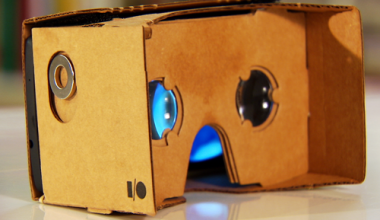Apple’s iPad sold 300,000 units by the end of its first day of general release, perhaps proving the viability of the consumer tablet market but also setting a bar for its competitors and their own upcoming tablet PCs. HP is already attempting to create differentiators between the iPad and its upcoming slate by emphasizing the latter’s support for Adobe Flash, video conferencing and other functions. Other competitors, including Nokia, could follow suit as they roll out their own wares throughout 2010; but as one analyst warns, the consumer tablet market is still in its infant stages, and still as a whole in need of general acceptance.
Apple’s iPad sold 300,000 units by midnight April 3, including pre-orders, on its first day of general release: enough to ensure the device as a commercial hit, at least in the short-term. In a larger way, though, those sales numbers represent not so much a victory for Apple but a sign that a market indeed exists for consumer-oriented tablets. As companies ranging from Hewlett-Packard to Nokia prepare similar tablet PCs in coming months, Apple’s hardware choices and rollout could become the competitive benchmark by which these competitors map their own choices and strategy.
Some signs of that shift are already present in HP’s strategy for its upcoming tablet, with videos and a company blog showing off the device’s ability to video conference and snap images. HP has also highlighted its Slate’s support of Adobe Flash, which powers rich content on many popular Websites. By contrast, the iPad does not support Flash, nor does the current version include a camera—both things that HP seems eager to highlight as the competitive differentiator for its own offering, due at an as-yet-unannounced point later in 2010.
“With this slate product, you’re getting a full Web browsing experience in the palm of your hand. No watered-down Internet, no sacrifices,” Phil McKinney, vice president and chief technology officer for Hewlett-Packard’s Personal Systems Group, wrote in a March 8 posting on the company’s Voodoo Blog. “A big bonus for the slate product is that, being based off Windows 7, it offers full Adobe support.”
McKinney followed that up a few weeks later with another Voodoo Blog post touting the HP slate’s other abilities.
“Think about the last time you chatted with friends over Skype on your notebook,” McKinney wrote on April 5. “Or uploaded a picture from your mobile phone to Facebook or Flickr. How about the last time you viewed images or video from an SD card or USB device. We know that you expect to be able to capture and share digital content on your mobile devices.”
That same day, Engadget posted an image of what it claimed was an internal HP presentation comparing the specs of the company’s upcoming tablet PC to the iPad. That document suggested that the “HP Slate” would retail for between $549 and $599, and feature a 1.6GHz Intel Atom Z530 processor, inward-facing VGA Webcam and outward-facing 3-megapixel camera. Windows 7 Home Premium, tethered to a proprietary HP touch-optimized user interface, will serve as the operating system.
Nokia is also developing a tablet competitor for entrance into the market later this year, according to recent online reports.
“Right now the supply chain (for a Nokia tablet) is being primed up for a fall release. It has to be on the shelf by September-October to meet demand for the holiday window,” Rodman and Renshaw analyst Ashok Kumar told Reuters on April 7. “You don’t want to give that much of a lead to Apple because otherwise it becomes insurmountable.”
Nokia apparently declined to comment on those supposed developments. Other manufacturers, including Fujitsu and Fusion Garage, have tablets in some stage of active development. This year’s Consumer Electronics Show (CES) in Las Vegas highlighted a number of laptops with touch-screen functionality, including the HP Touchsmart tm2 and Fujitsu Lifebook T4410, designed with an eye towards both the tablet and traditional PC markets.
But how will these tablets market themselves? HP and Fusion Garage, creator of the JooJoo tablet, are already touting their Flash support in a bid to slice off some iPad market-share. (Recent online reviews of the JooJoo’s Flash support have been unkind.) Other manufacturers could follow that same route, using Flash support to set themselves apart, whether or not their device uses Windows 7 or another, more proprietary user interface.
“By ignoring a pervasively widely used technology like Flash and treating its parent company with disrespect,” Charles Kind, an analyst with Pund-IT Research, wrote in a March 10 research note, “Jobs opened the door he must have preferred to leave closed: providing his competitors the opportunity [to] define these devices, technologies and markets far more clearly than he himself has done.”
On April 5, HP released a 30-second video demonstrating its slate’s video conferencing and image-snapping abilities, suggesting that both it and other companies may use embedded cameras as another differentiator over the iPad.
Yet despite the hoopla surrounding the iPad’s launch, and other companies’ aggressive entrance into the space, the tablet market is still nascent; as one analyst warns, simply because Apple managed to sell a few hundred thousand units during its new product’s first weekend on the open market doesn’t mean that others will be able to reproduce a similar feat, extra hardware and Flash support or no.
“The market will play host to a flood of ‘me too’ tablets in 2010, but it’s an immature product category with an unproven use case,” CCS Insight analyst Geoff Blaber told Reuters in an April 7 article. “Apple’s brand and service offering means the iPad will be an exception in a category that will struggle to gain consumer acceptance.”
Resource:
http://www.eweek.com/c/a/Mobile-and-Wireless/Apple-iPad-Sets-Tablet-Bar-for-Nokia-HP-Microsoft-801771/

